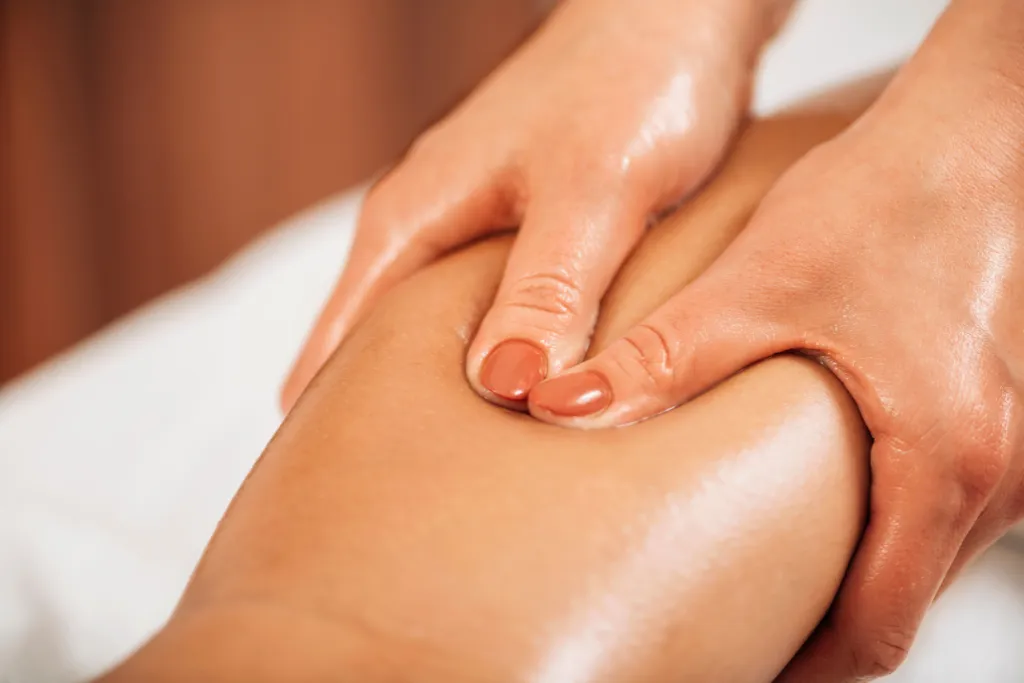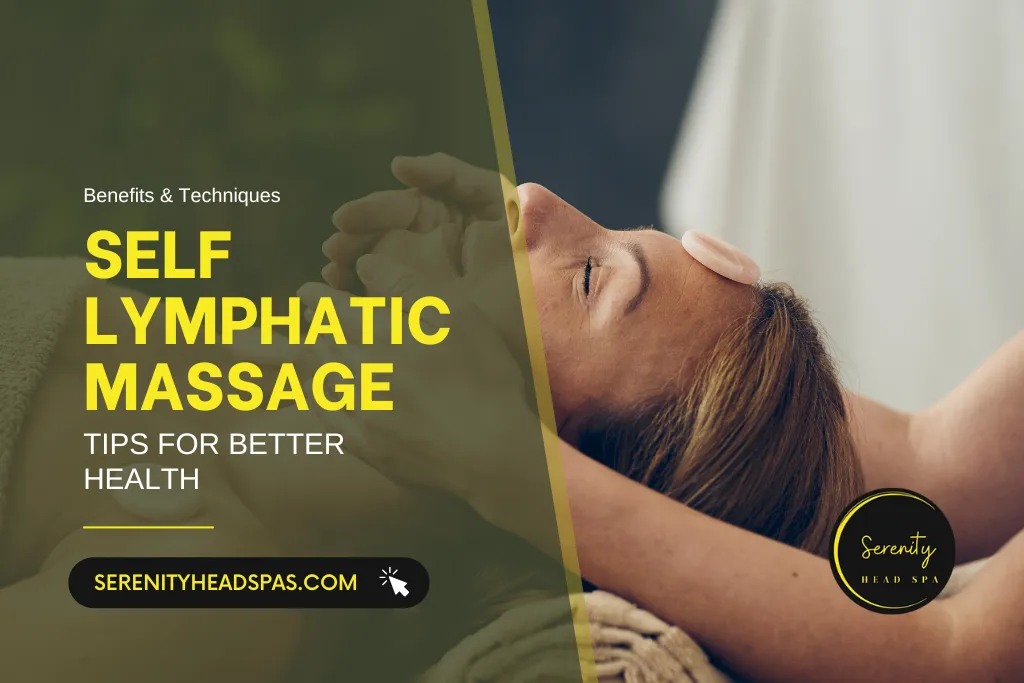After the procedure is complete, light pressure is applied to your skin to stimulate the lymphatic system; a key contributor of unwanted toxins, waste material and excess fluid that the body must be rid of. This type of lymphatic drainage massage stimulates the lymph glands and encourages circulatory lymph by opening the body’s natural drainage routes; it also flushes out toxins, decreases swelling and even boosts circulation. And although the lymphatic vessels, key vehicles of the lymph system, circulate fluid through your body to help relieve congestion.
It’s a self-lymphatic massage and releases bloating, stimulates your immunity and will give you radiant skin if done once a day! When you feel tight or congested in areas, you can utilize manual lymphatic drainage to assist. This exercise is really easy yet it works wonders yet again and if it is performed from the comforts of your home then it is a great way to boost your health without paying anything extra.
What is Self Lymphatic Massage?
A lymphatic massage uses gentle massage on the skin to encourage the lymphatic system to do its job, as the lymphatic system is essential for getting rid of toxins, waste products, and excess fluid in your body. This massage method emphasizes supporting the flow of lymph fluid throughout your body’s natural drainage systems to help with detoxing, swelling reduction, and improved circulation in your circulatory system.
While a physical therapist or specialized lymphatic massage therapist with lymphatic drainage techniques can perform treatments on you, the acts of doing the techniques yourself can also prove beneficial. Regular massage is predominantly about muscles, whereas lymphatic drainage is all about the flow of lymphatic fluid through lymphatic vessels.
Simply practicing self-lymphatic massage on a regular basis can reduce bloating, improve your immune system, including white blood cells, and even give your skin a glow. The best part about its almost like an effortless way to do so in you can do this at home, so it is a fairly low-cost thing to do to get your body into better health.

Help With Swelling/Bloating: Helps eliminate excess fluid and waste in the body that may create puffiness and may also try to treat lymphedema that sometimes develops following cancer treatments.
Boosts Circulation: Increases blood flow, delivering more oxygen and nutrients to your cells, improving vessel function throughout the body.
Supports Immune Function: White blood cells are transported by the lymphatic system, which helps your body defend against infections and maintains the overall health of your body.
Supports Skin Beauty: Helps flush facial swelling, improve glow and promote detox, and may help with cellulitis and chronic venous insufficiency.
Relieves tension: If you ever feel like you’re holding stress and tension in your body, lightly massaging pressure points can help relieve it.
Supports Detox: Helps in flushing out toxins and build-ups from your system for optimal health through stimulating vessels and nodes.
Steps for Performing Self-Lymphatic Massage
Now that you know the benefits, here’s how to give yourself a lymphatic massage. Do these simple drainage techniques to stimulate lymph flow and move fluid through your lymphatic vessels.
1. Begin with Deep Breathing
- Start with several deep breathing exercises to help activate your lymphatic system.
- Deep breathing creates pressure changes in your chest that help stimulate lymph flow.
2. Begin with the Neck and Shoulders
- Start by finding a comfortable and quiet place to sit.
- The essential thing to wear is loose-fitting clothes to ensure you are free in movement.
- You can put a small amount of massage oil or lotion on your skin if you want.
Technique:
- Neck: Massage the lymph nodes located in your neck and behind your ears with gentle, circular motions. These are also focal points for lymph drainage.
- Shoulders: Slide your hands up toward the lymph nodes in your armpits, then massage the area around your clavicle.
3. Massage the Arms
Now, go to your arms to get the lymphatic flow in the upper body moving. This is particularly important for those who have experienced breast cancer, as lymphedema can develop in the arms after lymph node removal.
Technique:
- Start at your fingertips, and in smooth, upward motions, lead the fluid up toward the armpits.
- Focus particularly on your elbow and shoulder joints, where lymph fluid can commonly collect.
4. Massage the Legs
Your legs play an important role in lymphatic drainage, too. Begin at your ankles and energetically move up to your groin. These techniques can help with lipedema, a condition that causes fat buildup in the legs.
Technique:
- Use slow, pumping movements to help stimulate your leg lymph nodes.
- Include inner thighs and groin area that lymphatic flow is naturally moved toward.
- Keep doing this massaging motion until you get to your groin.
- For those with edema or swelling, compression garments may be recommended by your therapist after massage.
5. Massage the Chest and Abdomen
It was also an important step for general lymphatic health. Massage with an upward motion toward the body’s natural lymph nodes.
Technique:
- Start at the middle of your chest and move outward in a circular motion towards the sides of your body.
- Pamper All Your Organs by giving your abdomen a loving rub from the middle outwards.
- Your lymphatic vessels are all pointed towards the abdominal region for better disease fluid relocation movement and reduction in belly fat.
6. Massage the Back
The back, particularly around the spine, contains many key paths of the lymphatic system. Pay attention to draining fluid upward toward your neck lymph nodes.
Technique:
- Follow the lymphatic pathways up your back using your fingers along the spine.
- Slide upwards to the neck area, to assist with detoxifying and moving the fluid.
7. Finish with the Face
One also has lymphatic fluid under the skin, so this is another area where lymphatic drainage treatment can really move the needle; for combating puffiness and for getting clearer skin.
Technique:
- Roughly massage the lymph nodes situated in the face using light, bleeding gestures.
- Aim from your jaw line up to the hairline.
- It will also help de-puff the face and boost skin luminosity.
Self-Lymphatic Massage Tips for Better Results
For self-lymphatic massage, keep these key tips in mind:
- This is to use Light Pressure: Not Deep Tissue Pressure A lymphatic massage is a gentle massage of the surface where the lymphatic vessels are.
- Always massage up: Always massage according to your lymphatic flow, upwards to your lymph nodes, never downwards.
- Be Consistent: As with any ritual, the more frequently you do it, the better; 2-3 times per week is best.
- Drink Water & Stay Hydrated: Drink plenty of water to help flush out the toxins that have been released from your massage.
- Don’t push yourself: Do not push yourself to finish things as fast as you can. This section is important, so take your time!
- Focus on Tight Areas: If you notice that certain places on your body feel like they’re full to the brim or too tight, spend some time massaging them more.
Precautions to Keep in Mind
Though self-lymphatic massage is generally thought to be safe, there are a couple things to keep in mind when you first start out:
- Do Not Massage Class A Outside Injuries: Do not massage in the area of incisions, lacerations, sores or infection as you can spread infection via the lymphatic vessels.
- Consult Medical Professional: If you have any medical condition or are pregnant, consult your doctor before proceeding with lymphatic massage. Individuals with lymphedema should see a certified lymphedema therapist.
- Don’t Overdo It: Lymphatic drainage is beneficial, yet too much at once can make you uncomfortable or irritable.
- Get Professional Help: If you have a serious condition, such as lymphedema following breast cancer, it’s best to find a massage therapist or physical therapist who is trained in manual lymphatic drainage.
Conclusion
Self-lymphatic massage is an easy and effective practice that can support your health and well-being in a myriad of ways. This massage technique; whether you seek to minimize swelling, boost circulation or simply elevate your body’s detoxification; offers a gentle and effective option. With everything from healthier skin to enhanced immune function, the benefits of your new routine, combined with regular self-lymphatic massage, will lead to a better you.
Learn this simple self-care practice to help you find peace and to take a little journey of relaxation for you!

